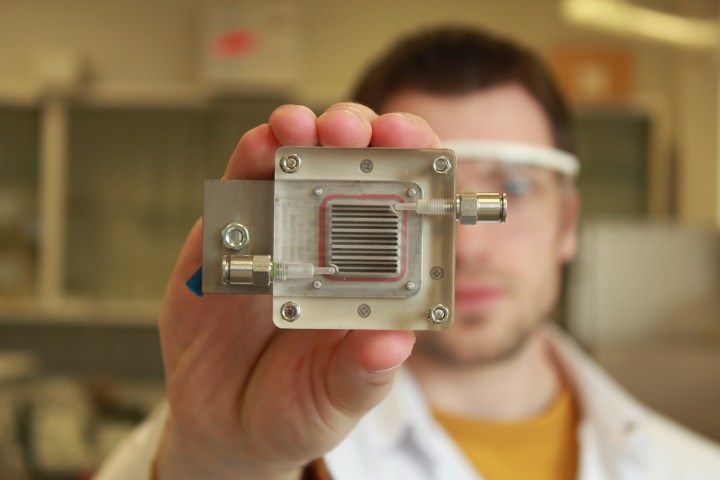
Researchers at the University of Antwerp and Katholieke Universiteit Leuven (KU Leuven) may be onto just that. The team has developed a small device that purifies air on one side and produces hydrogen gas on the other. All it takes is a bit of light to power the process.
The device spawned out of a discovery at KU Leuven, where researchers realized they didn’t need clean liquid water to create hydrogen gas. Their small device could instead pull water molecules directly from the air. Taking that one step further, Sammy Verbruggen and his team began to use polluted air, which, he told Digital Trends, “seems to work even better.”
Basically, what the engineers did was separate two primary reactions by a middle membrane. “On one side you have the purification of air by converting small organic molecules to less harmful compounds using a nano-material that is activated by light,” Verbruggen explained. Hydrogen atoms split from those molecules, pass through the middle membrane, and react to H2 gas on the other side. This hydrogen can be stored and used later as fuel for vehicles like buses or rockets.
The more pollution, the more hydrogen gas is produced. “In that way the application potential of this technology is probably most evident in industries that cope with heavily loaded waste gas streams,” Verbruggen said. “The paint and textile industry, or other activities that involve large quantities of organic solvents, are some of the examples that immediately come to mind.”
In its current form the device is only a few square centimeters and uses artificial light to power the reaction, so the researchers now hope to scale it up for industrial applications and tweak it to work with sunlight.
A paper detailing their study was recently published in the journal ChemSusChem.


